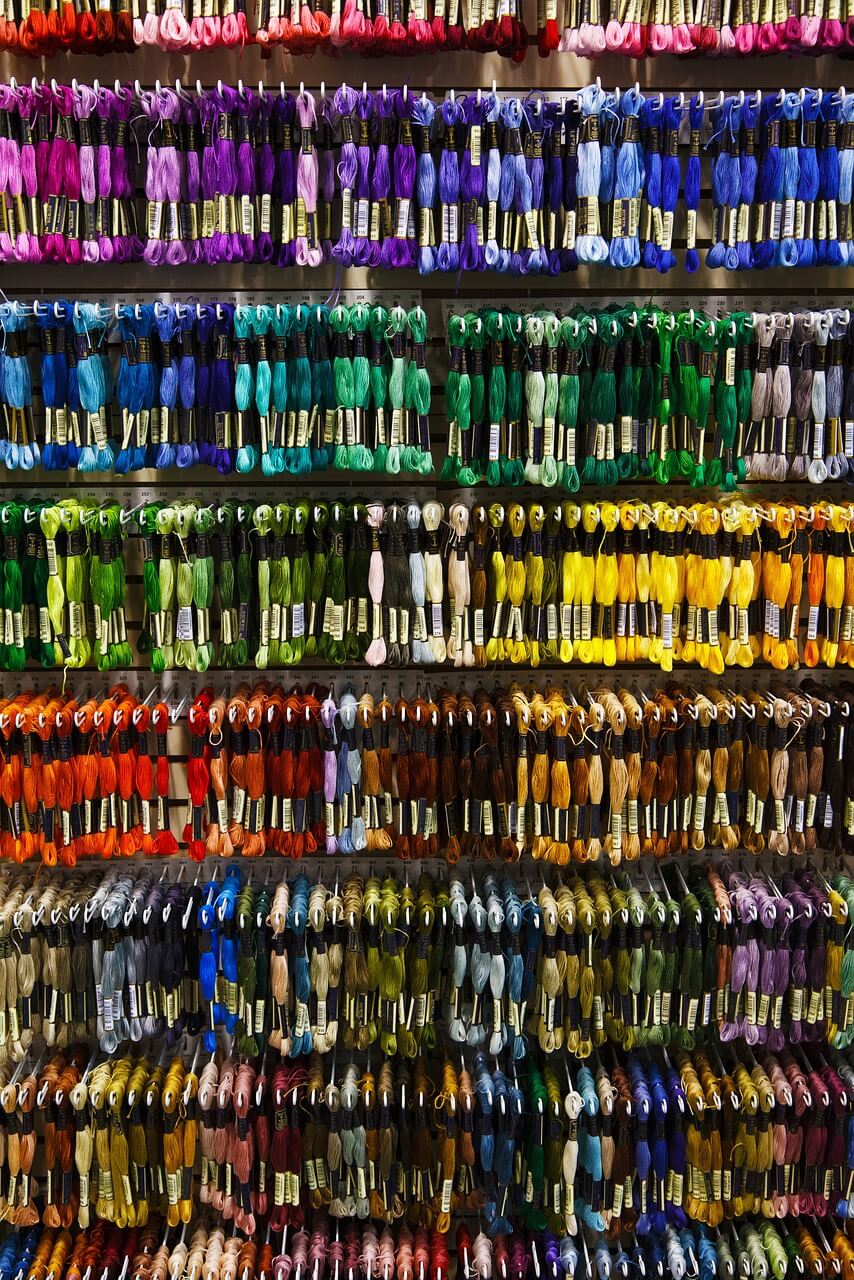- Home
- What do I need?
- Embroidery Thread Conversion Chart
Embroidery thread conversion chart
An embroidery thread conversion chart will enable you to use a chart designed for one brand of embroidery floss, if you only have a different brand available. (The previous link will take you to a DMC to Anchor conversion chart.)
Each major manufacturer of embroidery thread will dye their own colors and give each shade its own unique number, which is why an embroidery thread conversion chart is necessary.
The numbers will not indicate the same color if you use a different company's thread. For example black in the DMC range has the number 310, whereas if you are using Anchor you will find it numbered as 403.
Each cross stitch designer will tend to use a particular brand. This choice could be due to a number of reasons. In my case DMC floss was the only one sold in my local needlework store when I first started stitching. I therefore grew to memorise the colors that I used frequently, making DMC the obvious choice when I started designing.
Stick to one brand per project
Stick to one brand per project. Not all colors have an exact match in threads from a different brand. Any embroidery thread conversion chart can only give an approximate match.
The fact that a particular shade may only be available from one manufacturer, is sometimes used to advantage by a designer, who will include embroidery threads from more than one source in a design, on purpose.
Another thing to be aware of, is that if there isn't a direct match for a color, then a thread number in the alternative range can be used to represent more than one shade from the original brand. If intricate shading is used in a design this can affect the finished project.
Buy all the required thread at the same time
Buy all the required thread at the same time. Although manufacturers are very careful to produce exactly the same shade each time, occasionally it can vary just a tiny bit. This is another reason why an embroidery thread conversion chart can be useful.
I remember starting a new skein of brown thread when in the middle of an area on a picture. A distinct line appeared where I changed over. Holding the two skeins together no difference was noticeable, it only showed up in the actual stitching.
If you are likely to need more than one skein of a color for your project, therefore, it is best to buy them all at the same time. Needlework stores tend to buy their skeins in boxes of 12, and not reorder until they run out, minimizing the chance of this happening to you.
If you are unlucky enough to find yourself needing to buy a second skein at a later date, then you can try the tweeding method to help avoid that line appearing. To do this, use a single strand from each skein, together in the needle.
You will find more pages on this site about embroidery floss and how to organize it.
Keep in Touch with Stitchin'Times Newsletter
- Home
- What do I need?
- Embroidery Thread Conversion Chart


